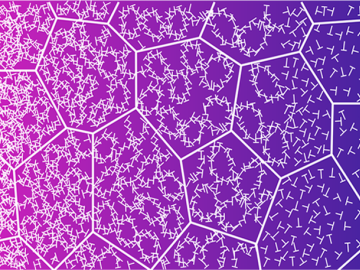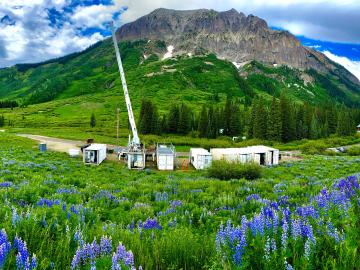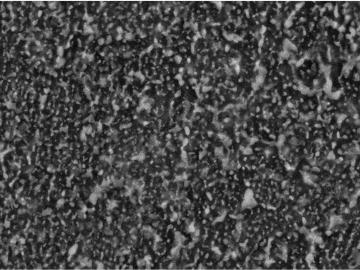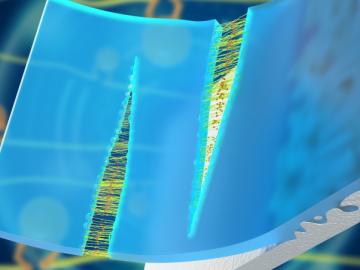
Filter News
Area of Research
- Advanced Manufacturing (6)
- Biology and Environment (5)
- Computer Science (3)
- Electricity and Smart Grid (1)
- Energy Science (41)
- Fusion and Fission (2)
- Isotopes (1)
- Materials (10)
- Materials for Computing (9)
- National Security (2)
- Neutron Science (7)
- Quantum information Science (3)
- Sensors and Controls (1)
- Supercomputing (9)
- Transportation Systems (1)
News Type
News Topics
- (-) Big Data (29)
- (-) Grid (26)
- (-) Materials (53)
- (-) Quantum Science (36)
- (-) Transportation (34)
- 3-D Printing/Advanced Manufacturing (56)
- Advanced Reactors (7)
- Artificial Intelligence (52)
- Bioenergy (28)
- Biology (44)
- Biomedical (28)
- Biotechnology (14)
- Buildings (35)
- Chemical Sciences (36)
- Clean Water (14)
- Composites (19)
- Computer Science (84)
- Coronavirus (9)
- Critical Materials (12)
- Cybersecurity (8)
- Education (2)
- Emergency (3)
- Energy Storage (35)
- Environment (73)
- Exascale Computing (27)
- Fossil Energy (4)
- Frontier (25)
- Fusion (21)
- High-Performance Computing (63)
- Hydropower (1)
- Isotopes (34)
- ITER (6)
- Machine Learning (22)
- Materials Science (51)
- Mathematics (7)
- Mercury (4)
- Microelectronics (2)
- Microscopy (16)
- Molten Salt (5)
- Nanotechnology (17)
- National Security (38)
- Neutron Science (47)
- Nuclear Energy (27)
- Partnerships (29)
- Physics (17)
- Polymers (12)
- Quantum Computing (24)
- Security (16)
- Simulation (22)
- Space Exploration (9)
- Statistics (4)
- Summit (25)
Media Contacts


Oak Ridge National Laboratory, University of Tennessee and University of Central Florida researchers released a new high-performance computing code designed to more efficiently examine power systems and identify electrical grid disruptions, such as

New data hosted through the Atmospheric Radiation Measurement Data Center at Oak Ridge National Laboratory will help improve models that predict climate change effects on the water supply in the Colorado River Basin.

Oak Ridge National Laboratory researchers have additively manufactured a lightweight aluminum alloy and demonstrated its ability to resist creep or deformation at 300 degrees Celsius.

Research teams from the Department of Energy’s Oak Ridge National Laboratory and their technologies have received seven 2021 R&D 100 Awards, plus special recognition for a COVID-19-related project.

A team from ORNL, Stanford University and Purdue University developed and demonstrated a novel, fully functional quantum local area network, or QLAN, to enable real-time adjustments to information shared with geographically isolated systems at ORNL

Oak Ridge National Laboratory researchers have developed a novel process to manufacture extreme heat resistant carbon-carbon composites. The performance of these materials will be tested in a U.S. Navy rocket that NASA will launch this fall.

Oak Ridge National Laboratory researchers developed and demonstrated algorithm-based controls for a hybrid electric bus that yielded up to 30% energy savings compared with existing controls.

A team led by the ORNL has found a rare quantum material in which electrons move in coordinated ways, essentially “dancing.”

The daily traffic congestion along the streets and interstate lanes of Chattanooga could be headed the way of the horse and buggy with help from ORNL researchers.


